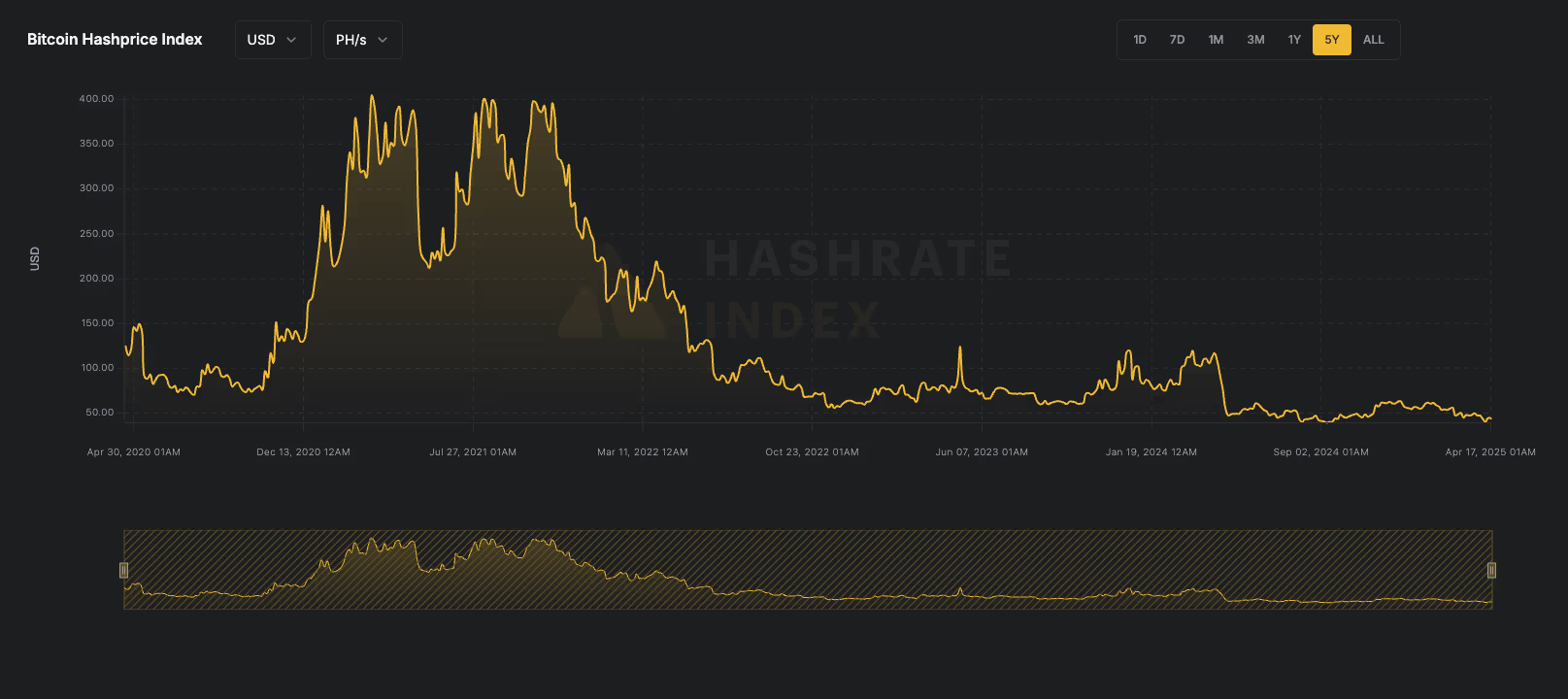- Hashprice drops to $44 per petahash, approaching August lows, underscoring slimmer margins despite $84,000 bitcoin spot valuation today.
- April halving halved block rewards; rising network difficulty and energy costs further compress miner cash flows worldwide today.
- Valkyrie Bitcoin Miners ETF tumbles fifty percent year‑to‑date, outpacing bitcoin’s ten percent decline, reflecting operational stress for miners.
Hashprice, the benchmark that tracks revenue per petahash of computing power, has fallen to $44.00 PH/s, according to data from HashRate Index. The level is only marginally higher than the August 2024 trough and highlights shrinking margins across the mining sector.
The drop comes despite bitcoin trading near $84,000. April’s block‑reward halving cut issuance from 6.25 BTC to 3.125 BTC, immediately halving baseline revenue. At the same time, network difficulty climbed, transaction fees eased from early‑year peaks, and electricity prices moved higher in several regions. The combined effect has reduced cash flow for operators even as headline coin prices remain well above prior‑cycle averages.

For miners running latest‑generation hardware, the current hashprice sits close to estimated break‑even. Older machines, however, now operate below cost unless subsidized power contracts are in place. Some firms have begun redeploying rigs toward high‑performance computing tasks, including artificial‑intelligence inference, to diversify earnings.
The Valkyrie Bitcoin Miners ETF has declined about 50 percent year‑to‑date, while bitcoin itself is down roughly 10 percent over the same period. The performance gap underscores how sensitive miner profitability is to reward cuts and operating expenses.
Looking ahead, macro variables could add further strain. Energy prices remain volatile, and trade frictions may introduce tariffs on imported mining equipment. If bitcoin’s spot price stalls or retreats, hashprice could slip below the 2024 floor, forcing less‑efficient operators offline.
Still, hashprice near $44 PH/s shows that modern fleets can endure, though with tight margins. Miners able to secure low‑cost power and newer ASICs may weather the current phase, while others may accelerate mergers, asset sales, or transitions into adjacent compute markets.



